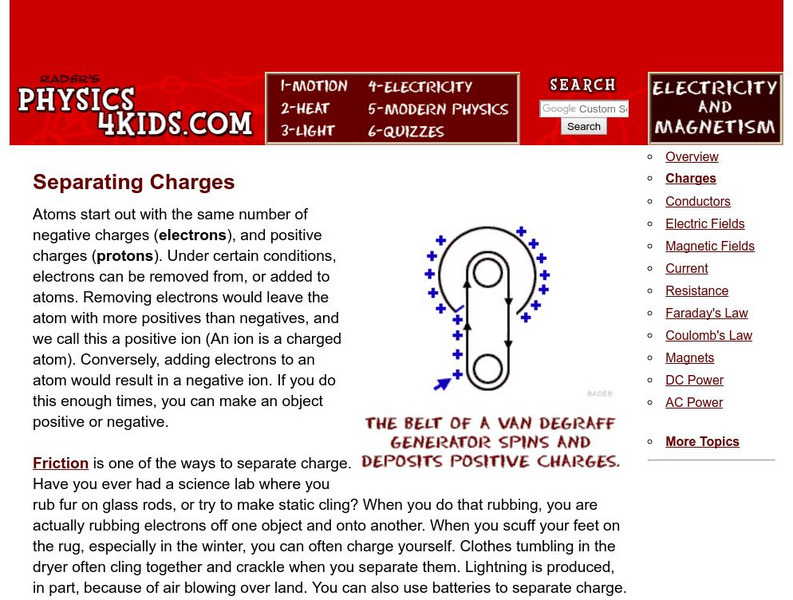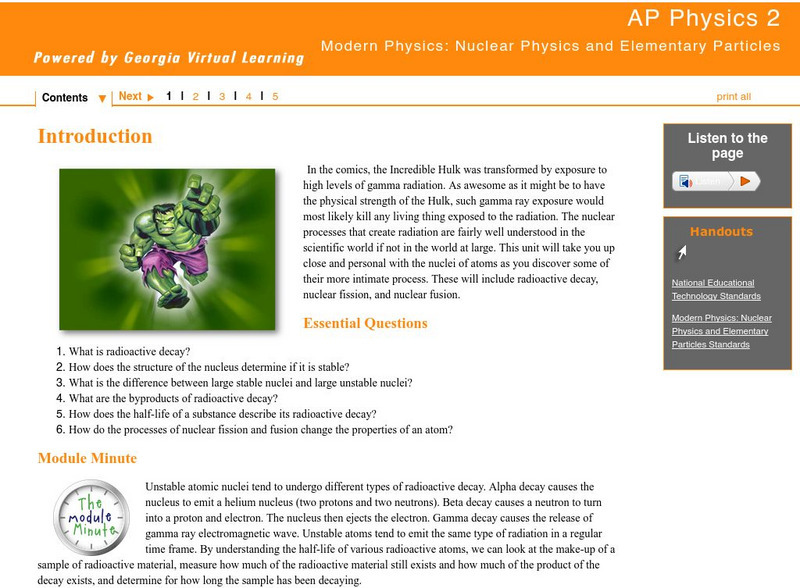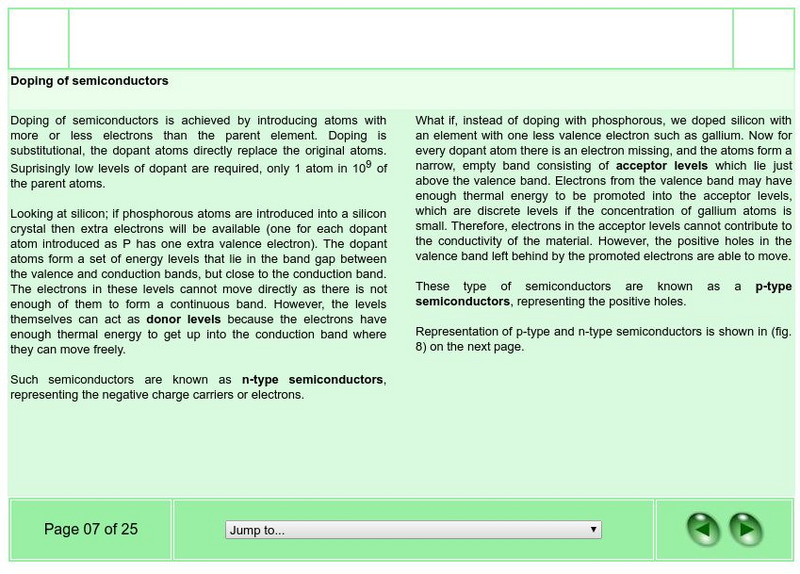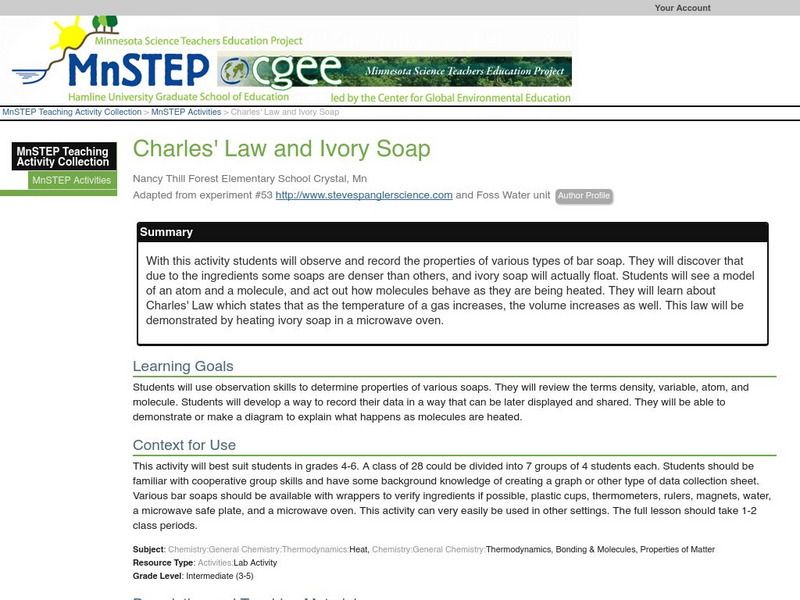Hi, what do you want to do?
Other
Atoms in Motion: Noble Gases
The ideal gas law is an empirical law; it's a relationship between the pressure in a system of gases to the volume, the temperature, and the number of gas atoms/molecules in the system. This "law" is valid if the gas atoms/molecules are...
TeachEngineering
Teach Engineering: Put a Spark in It! Electricity
Uncountable times every day "with the merest flick of a finger"each one of us calls on electricity to do our bidding. What would your life be like without electricity? Students begin learning about electricity with an introduction to the...
ClassFlow
Class Flow: What Is Matter?
[Free Registration/Login Required] Discover the composition of matter and the relationship between matter, atoms, and elements. Students will learn the differences between elements and compounds, and how molecules are formed. Chemical...
Ducksters
Ducksters: Chemistry for Kids: Elements: Neon
Discover the properties and characteristics of neon on this site.
Utah State Office of Education
Utah Science: Matter
Discover atoms and molecules which make up matter, motion of atoms and how to measure the mass, volume and density of matter.
Wolfram Research
Wolfram Science World: Sir Joseph John Thomson (1856 1940)
This site provides a brief biography of the english physicist J.J. Thomson.
Chiral Publishing
Chiral Publishing: An Introduction to Chemistry: Isotope Notation
Discover how to correctly write the notations for isotopes. Learn how using the atom's ionic charge can help determine the proper subscripts and superscripts to use.
Physics4kids
Physics4 kids.com: Charge It Up
Discover the science behind electrical charges. This brief overview describes changes in atoms that lead to the formation of electricity. Explanations are also provided for the topics of electrostatics and electric forces. The whole...
Thomas Jefferson National Accelerator Facility
Jefferson Lab: Element Hangman
How well do you know your elements? The computer will randomly pick the name of one of the elements. Use the clue to discover which element the computer picked. Be careful! Each incorrect letter you guess causes the atom man to decay.
Ducksters
Ducksters: Chemistry for Kids: Famous Chemists
Get some information about some famous chemists who made impacts on their fields! These scientists helped to develop the laws of chemistry and discovered many of the elements.
US Geological Survey
U.s. Geological Survey: Graded Bedding [Pdf]
This activity introduces students to the concept of sorting materials in different mediums and the sedimentary feature called graded bedding. Students will discover that water is a good medium to separate and sort particles and that...
American Chemical Society
Middle School Chemistry: Energy Levels, Electrons, Ionic Bonding
Students discover that ionic bonding occurs when electrons are transferred from one atom to the other and not shared as in covalent bonding.
University of Oxford (UK)
University of Oxford: Proteins and Nucleic Acids: Information Carriers
This chapter takes a look at proteins and nucleic acids as information carriers. Discover why the arrangement of atoms is of special importance.
Georgia Department of Education
Ga Virtual Learning: Nuclear Physics and Elementary Particles
This interactive unit will take students up close and personal with the nuclei of atoms as they discover some of their more intimate process. These will include radioactive decay, nuclear fission, and nuclear fusion.
University of Oxford (UK)
University of Oxford: Solid State Chemistry: Doping of Semiconductors
Discover how the doping of semiconductors is achieved by introducing atoms with more or fewer electrons than the parent element.
Science Education Resource Center at Carleton College
Serc: Charles' Law and Ivory Soap
With this activity students will observe and record the properties of various types of bar soap. They will discover that due to the ingredients some soaps are denser than others, and ivory soap will actually float. Students will see a...
















![U.s. Geological Survey: Graded Bedding [Pdf] Lesson Plan U.s. Geological Survey: Graded Bedding [Pdf] Lesson Plan](https://static.lp.lexp.cloud/images/attachment_defaults/resource/large/FPO-knovation.png)



